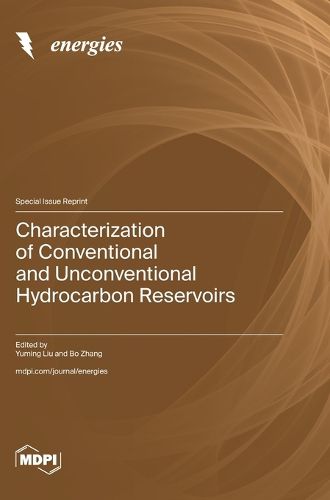Readings Newsletter
Become a Readings Member to make your shopping experience even easier.
Sign in or sign up for free!
You’re not far away from qualifying for FREE standard shipping within Australia
You’ve qualified for FREE standard shipping within Australia
The cart is loading…






This title is printed to order. This book may have been self-published. If so, we cannot guarantee the quality of the content. In the main most books will have gone through the editing process however some may not. We therefore suggest that you be aware of this before ordering this book. If in doubt check either the author or publisher’s details as we are unable to accept any returns unless they are faulty. Please contact us if you have any questions.
This special issue extensively explores various aspects, ranging from the characterization techniques of conventional and unconventional hydrocarbon reservoirs to the heterogeneity of reservoirs, numerical simulation, machine learning, and the evaluation and optimization of reservoir development. These studies demonstrate the continuous progress in oil and gas exploration and development technologies and highlight the importance of interdisciplinary integration, high-precision exploration techniques, intelligent oilfield management, and the in-depth development of unconventional oil and gas resources. Furthermore, the special issue focuses on key issues such as the quantitative assessment of oil and gas reservoirs, water flooding efficiency, and reservoir connectivity, which are crucial for optimizing the development strategies of oil and gas reservoirs. The application of high-resolution seismic imaging technology and multi-physical field coupling simulation methods indicates that future exploration technologies will develop toward higher precision and more in-depth analysis. Looking to the future, the special issue will emphasize the integration of interdisciplinary technologies, especially the combination of geology, geophysics, chemistry, and information technology, to drive innovation in oil and gas exploration and development. This approach aims to achieve a more accurate representation and a deeper understanding of hydrocarbon reservoirs.
$9.00 standard shipping within Australia
FREE standard shipping within Australia for orders over $100.00
Express & International shipping calculated at checkout
This title is printed to order. This book may have been self-published. If so, we cannot guarantee the quality of the content. In the main most books will have gone through the editing process however some may not. We therefore suggest that you be aware of this before ordering this book. If in doubt check either the author or publisher’s details as we are unable to accept any returns unless they are faulty. Please contact us if you have any questions.
This special issue extensively explores various aspects, ranging from the characterization techniques of conventional and unconventional hydrocarbon reservoirs to the heterogeneity of reservoirs, numerical simulation, machine learning, and the evaluation and optimization of reservoir development. These studies demonstrate the continuous progress in oil and gas exploration and development technologies and highlight the importance of interdisciplinary integration, high-precision exploration techniques, intelligent oilfield management, and the in-depth development of unconventional oil and gas resources. Furthermore, the special issue focuses on key issues such as the quantitative assessment of oil and gas reservoirs, water flooding efficiency, and reservoir connectivity, which are crucial for optimizing the development strategies of oil and gas reservoirs. The application of high-resolution seismic imaging technology and multi-physical field coupling simulation methods indicates that future exploration technologies will develop toward higher precision and more in-depth analysis. Looking to the future, the special issue will emphasize the integration of interdisciplinary technologies, especially the combination of geology, geophysics, chemistry, and information technology, to drive innovation in oil and gas exploration and development. This approach aims to achieve a more accurate representation and a deeper understanding of hydrocarbon reservoirs.